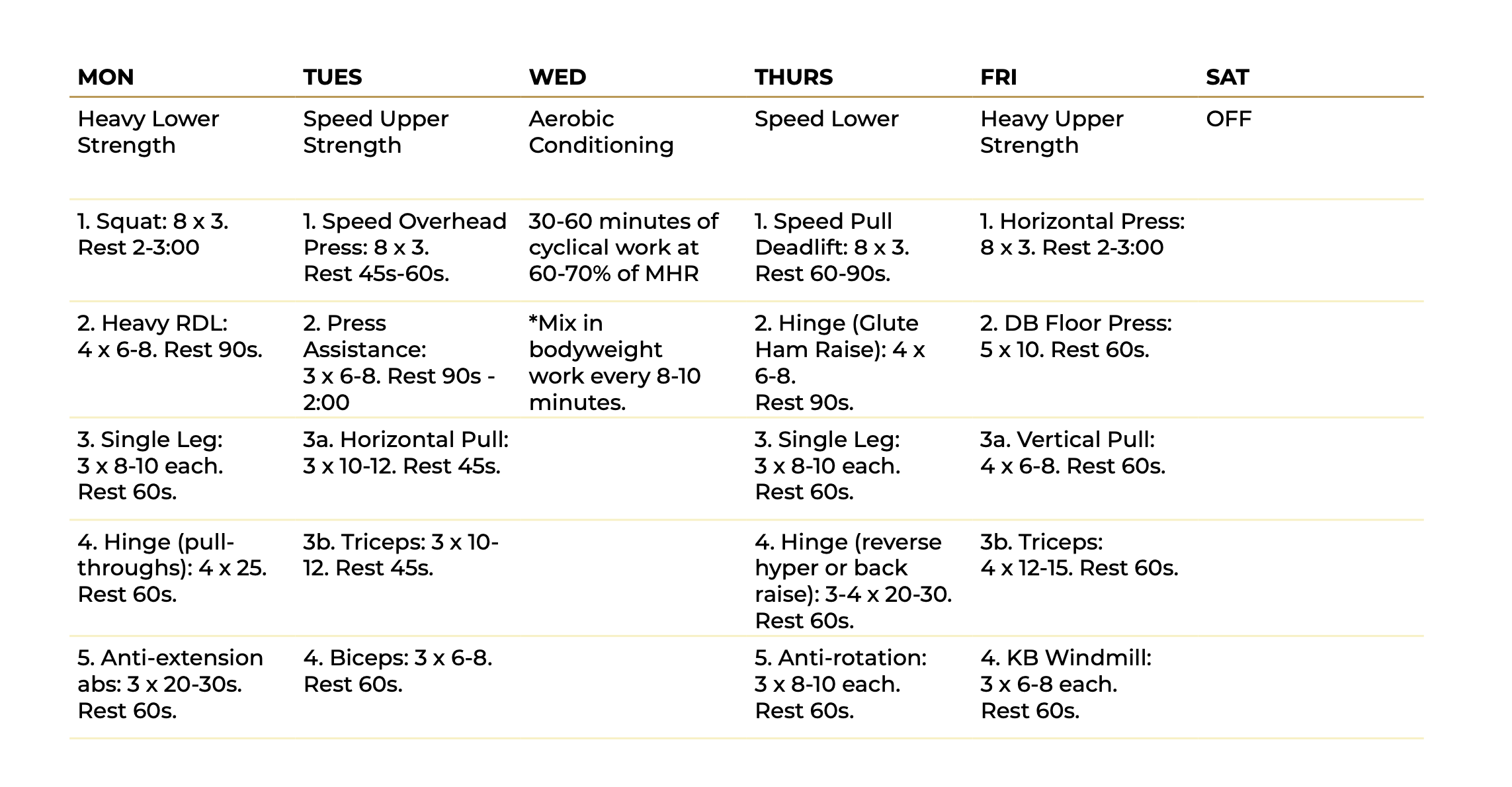5 Steps To Writing Better Programs
Oct 23, 2023Most people try to cram a square peg into a round hole when choosing their training plan by:
- Determining their optimal training split by what they feel will give them the best results instead of what is feasible for their schedule
- Failing to consider outside factors, such as their stress levels, before choosing their training split
- Equating hard training with better results and opting for a training split may do them a disservice
- Seeing a fit-influencer with a great physique and assuming what that person does will work for them
Instead, they should be following a sequential process that allows them to choose the right training split and training plan that will not only make their life easier and compliance higher but allow for better gains. This process is pretty straightforward and something anyone could utilize.
Let me explain.
Step 1: Determine The Optimal Training Schedule
Determining the optimal training schedule should be the easiest step of the five because the schedule you choose is the schedule that is unique to their lifestyle and aligns best with their needs. Determining their schedule is as simple as determining what days are best for them to train on—we'll get to the sexy stuff like determining their split later. This is an important step, and although it's not sexy, it's necessary to build the foundation for all things to come.
Here's a sample schedule (I'll warn you it's super basic, but it is this way for a reason that'll make sense in a minute):
Step 2: Determine The Training Split
Now that you're aware of what days your client is training, the next logical step is determining their split. Let's say that you've determined they’re able to train with weights two days a week, but they’re able to train two additional days from home performing conditioning measures. This information is important because choosing the right split should align with what they’re able to do on any given day. In this scenario, training for strength for two sessions per week would mean they’re likely going to need to utilize a full-body split as training an upper and lower split for two sessions a week wouldn't be optimal.
On the other hand, let's say they’re able to perform three strength sessions per week plus two conditioning sessions per week from home—you'll have more options available with higher levels of flexibility. Additionally, I've found that most people tend to fall into three buckets - full body training, lower/upper split, or a lower/upper/full body hybrid, all prioritizing some aerobic conditioning of course.

Step 3: Determine The Methods
Now that you've determined their optimal training split, the next step is to input the methods. These are the strategies you'll be using to facilitate their strength and conditioning gains. To keep things simple, I will choose the methods for you to easily plug and play into these templates. As I mentioned earlier, having the advantage of working with thousands of people over the last 17 years, I've found these methods prudent for most people. I'm also assuming that you have a training age of at least three years and know how to perform and train all of the foundational movement patterns, i.e., squat, hip-hinge, lunge, push, pull, and carry.
Here are the methods and guidelines - one for four aerobic conditioning methods and one for four strength methods (these are examples that may or may not be applicable to a client you’re writing a program for.)


Step 4: Plug in Sets, Reps, and Rest Intervals (SRRI)
Now that we know the methods we'll be using, it's time to plug in the sets, reps, and rest intervals (SRRI). In addition to SRRI, I'll be plugging in the appropriate exercises that will give you ideas of what variations you can utilize, how to use them, and provide the framework for your future programming.
Here’s an example using a conjugate split + 1 aerobic conditioning session.

Step 5: Collect Feedback
Now it's time to take inventory of their first week of programming. Went well? What did you learn? What didn't go well? Making adjustments on the fly will likely be necessary as you get comfortable plugging in the right programming and as you get to understand what makes the client tick. Last but not least, perform each training split for a minimum of four weeks to ensure the best results. This timeframe will allow you to build motor patterns, figure out what works and what does not, and learn more about your client (and for them to learn more about your style of programming) in the process.
Closing
When you're using the right training split and training plan, remember that it's more about what aligns with the clients’ needs—your goals, training schedule, training age (experience). It's NOT what looks the best or what worked for some IG fitfluencers. At the end of the day, no cookie-cutter approach works for everyone. If there was, I wouldn't have a job.
Interested in learning more about how to write better programs? Check out my Training Template Handbook here.

